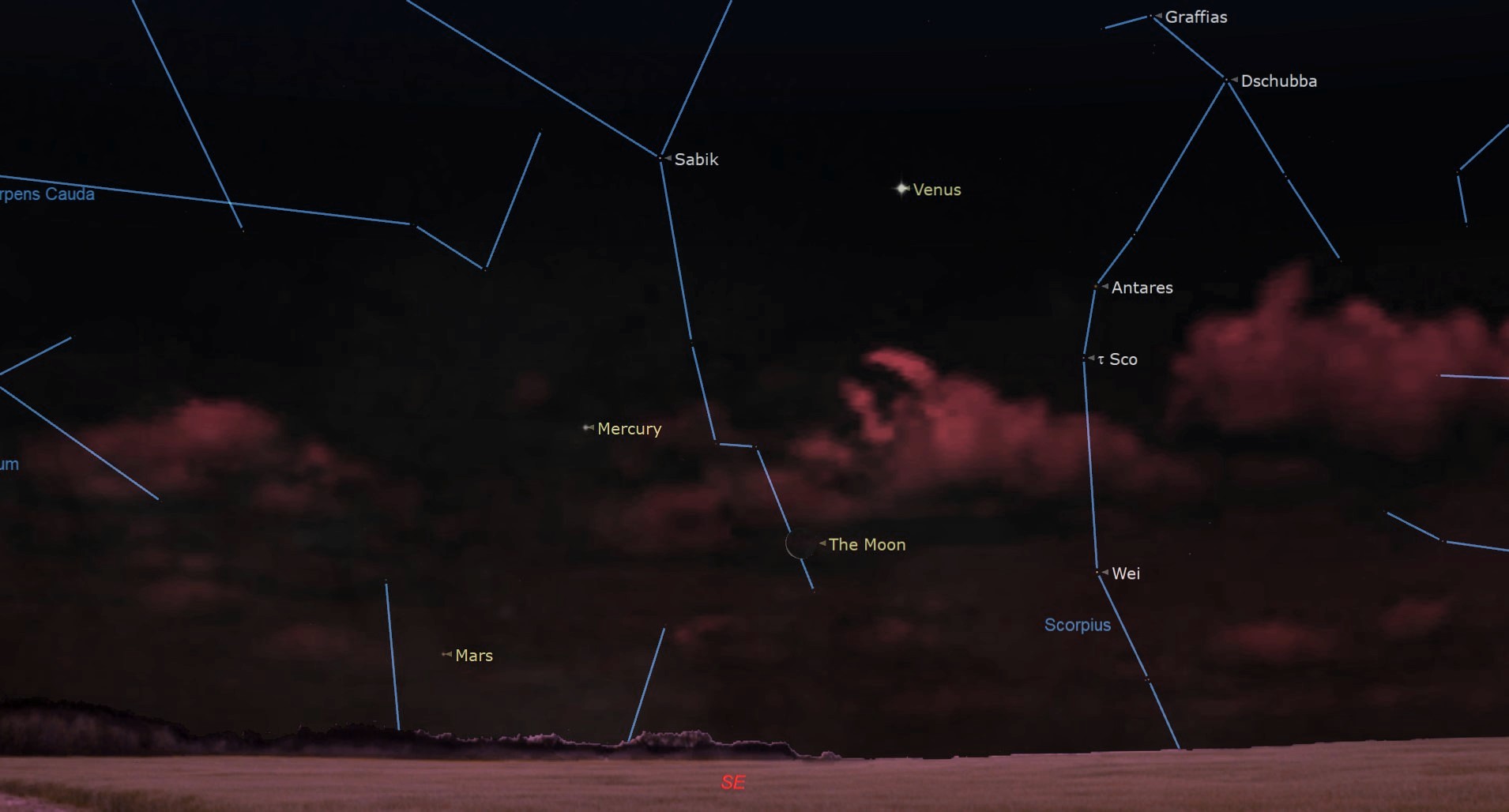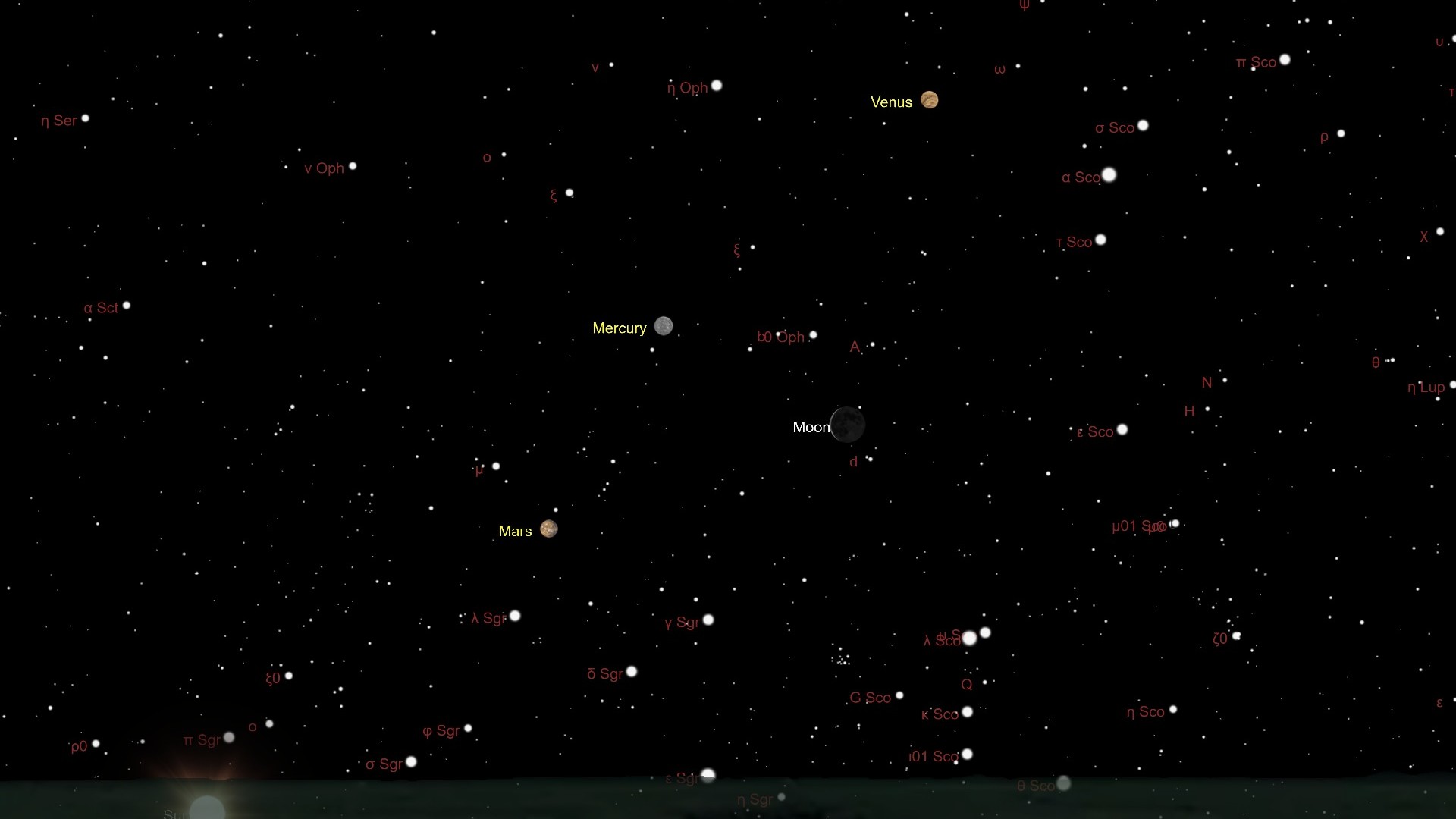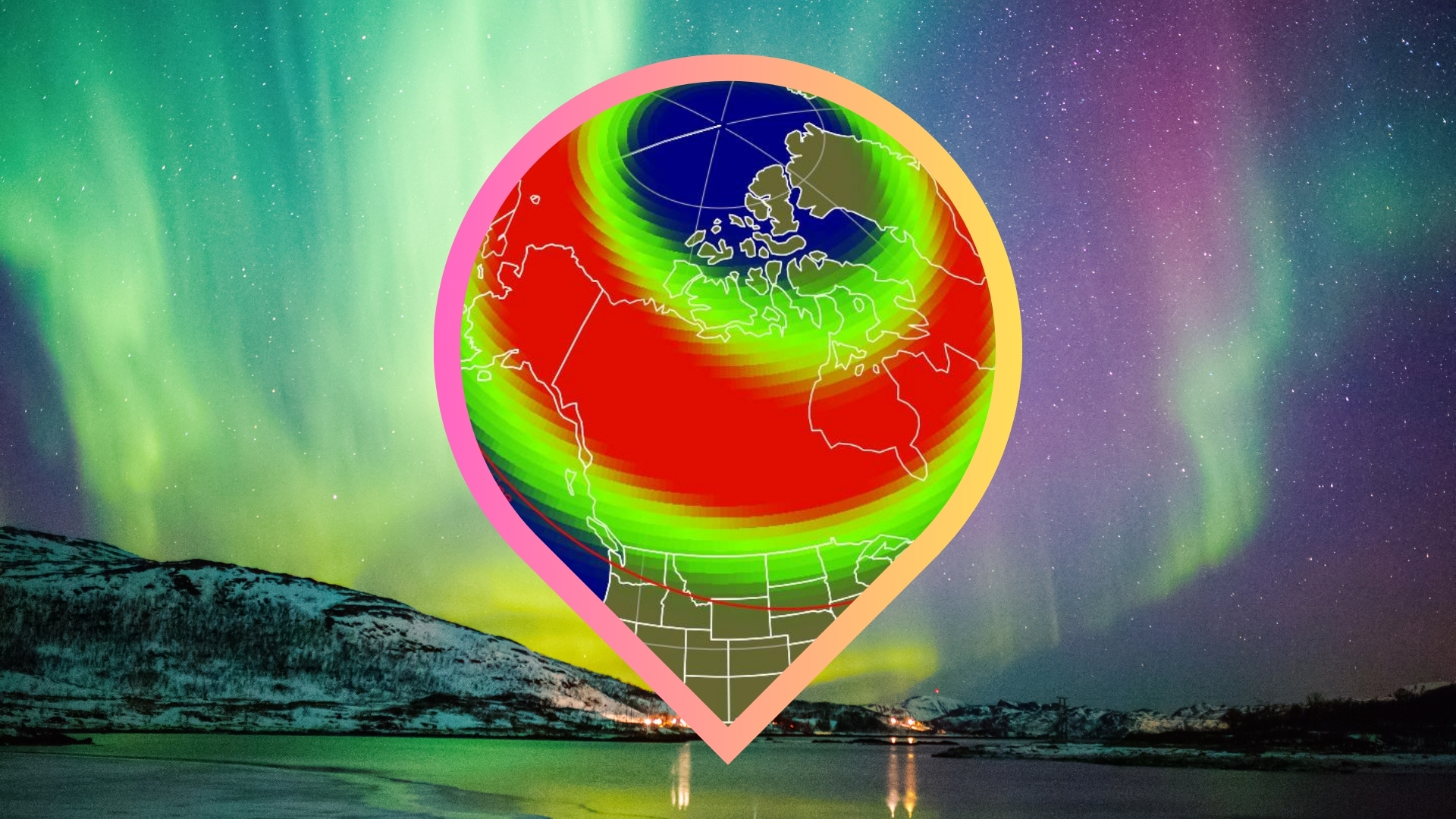See the moon meet up with Mercury, Venus and Mars in the early morning sky on Jan. 9
Venus, Mercury and Mars will all appear alongside Earth's closest neighbor in the night sky this week.

On Tuesday morning, the moon will meet up with three of our closest neighbors in the solar system.
A very thin crescent moon, less than 5% illuminated, will appear low in the sky next to Mercury, Mars and Venus. Of the three planets, Venus will be most visible, shining bright during its current period of morning apparition. Mars will be less visible, and could require binoculars to make out near the horizon in the morning twilight. Mercury, meanwhile, will be fairly bright at around magnitude 0. In some areas with low light pollution and a flat, unobstructed view of the horizon, the world might be visible without optical aid.
Venus will rise first, becoming visible around 2.5 hours prior to sunrise. Look to the southeast to find the pale yellow planet shining brightly in the early morning sky. From there, Mercury and the moon will rise roughly an hour later; Mercury will appear above and to the left of the moon. Mars then brings up the rear, rising above the horizon roughly a half-hour before sunrise.
Related: Night sky, January 2024: What you can see tonight [maps]

Looking for a telescope to see the planets of the solar sytem up close? We recommend the Celestron Astro Fi 102 as the top pick in our best beginner's telescope guide.
If you do use binoculars or a telescope to observe the trio of planets alongside the moon, make sure to take precautions to never look in the direction of the rising sun — through an optical aid or with the naked eye.
Check sunrise times in your area to make sure you avoid risking damage to your eyes if you attempt to zoom in on these planets Tuesday morning, as they will appear close to where the sun will be rising.
Mercury will reach its highest point in the morning sky on Monday (Jan. 8), rising some 16 degrees above the southeastern sky (your fist at arm's length corresponds to around ten degrees). The same day, the innermost planet will reach its greatest separation from the sun, known as its "greatest elongation." That makes this week a great time to get out early and try to catch sight of the elusive planet in general, which is only visible a few weeks a year during these times of greatest elongation.
Breaking space news, the latest updates on rocket launches, skywatching events and more!
Mars, meanwhile, is fairly elusive this time of year as well, never rising high above the horizon. On Tuesday (Jan. 9), in fact, it will be less than ten degrees above the horizon, making it difficult to spot from many areas.
Venus is unmistakable in the morning sky, shining brightly at around magnitude -4.0. It will remain a morning beacon until disappearing from southern latitudes in the Northern Hemisphere skies around May 2024 and reappearing as an evening apparition in June 2024.
If you are hoping to catch a look at the moon or the planets in the night sky, our guides to the best telescopes and best binoculars are a great place to start.
And if you're looking to snap photos of any of these or the night sky in general, check out our guide on how to photograph the moon, how to photograph the planets, as well as our best cameras for astrophotography and best lenses for astrophotography.
Editor's note: If you take a great picture of any of these planets alongside the moon and would like to share it with Space.com’s readers, send your photo(s), comments, and your name and location to spacephotos@space.com.

Brett is curious about emerging aerospace technologies, alternative launch concepts, military space developments and uncrewed aircraft systems. Brett's work has appeared on Scientific American, The War Zone, Popular Science, the History Channel, Science Discovery and more. Brett has degrees from Clemson University and the University of North Carolina at Charlotte. In his free time, Brett enjoys skywatching throughout the dark skies of the Appalachian mountains.

